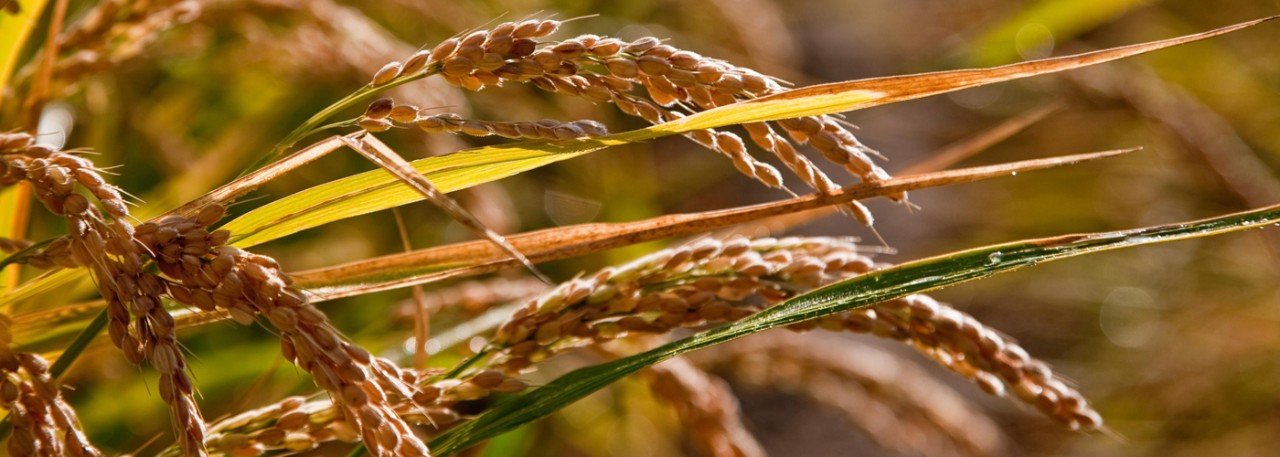.png.transform/rendition-xs/image_image%20(1).png)
Calasparra PDO
Rice (Oryza sativa,) of the Bomba and Balilla X Sollana varieties, grown for human consumption.
Tasting notes
This rice stands out, from the culinary point of view, for its flavor and hardness as well as its absorbency of flavors during cooking and the fact that the grains do not stick together.
Other notes
The most widely-grown variety is the Balilla X Sollana.
Characteristics of the raw grain:
- Grain length: 5.3 a 5.6 mm
- Grain width: 3.10 mm
- Grain thickness: 2.12 mm
- Amylose (% dry matter): 20.52 %
Milling characteristics (Grain behavior during processing)
- Total yield (%): 63.00 %
- % broken grains: 9.24 %
Cooking characteristics
- Cooking time: 20.0 min.
- Water absorption*: 3.7
- Increase in grain length: 49.35 %
(*) parts of water / parts of rice. According to the Regulatory Council’s Tasting Committee.
Calasparra Round grain variety (average length = 5.3 mm), when cooked, length and size increase by 70%. Protein content: 8.5 %. Cooking time: 20 min. Yield: 100 g/portion. Made exclusively from the Bomba y Balilla X Sollana varieties and sold as white, brown, and semi-milled rice.
- White rice: the husks have been completely or partially removed, and the color may be different shades of white but is always uniform. Commercial categories: Extra and Prime.
- Brown rice: These are the ripe grains without the outer husk but retaining the bran which is what gives brown rice its characteristic color.
The general characteristics of the Bomba variety include the roundness of the grain and its hardness which requires longer cooking, resulting in a large increase in length and high absorbency.
Production / Processing method
Land that has been used to grow legumes is turned to provide green fertilizer for rice production. The fields, divided into terraces with a slight slope towards the river, are flooded then the rice is sown by hand. It is left in water to a depth of about 7-8 cm until the plant sprouts. Weeds are then removed manually and plants are replaced in areas where sprouting did not take place.
In the month of July, the crop is fertilized. In the case of organic farming, fertilization is carried out in compliance with the regulations. The level of water is maintained throughout the vegetative cycle, and is drained off 8 or 10 days before harvesting, once the grain is ripe. Cultivation on terraces means that the water can be kept in constant movement, being taken from the main irrigation channel and passing from plot to plot, finally draining into the river. This means that the water never stagnates in the fields.
Once the water has been drained off and the surface is in a suitable condition, the rice is harvested and sent to the mills or cooperatives which carry out the following processes:
- Drying, to remove any excess moisture, reducing moisture content to 15%.
- Storage, in silos or storehouses once dry, prior to milling.
- Milling to remove the husks and bran, preparing the grains for sale as white rice. In brown rice, only the husks are removed, leaving the bran.
- Cleaning, with removal of any foreign bodies using blowers and vibration.
- Packing into authorized packs, using automatic equipment.
- Quality control to ensure that packs are correct regarding weight, foreign matter, defective grains, etc. and regarding tolerances as laid down in the regulations.
- Labeling, including back labels..
Geography / Relief and climate
In general, the soil is brown and limey on a consolidated base, and some areas contain marl.
The production area, called Coto Arrocero, is located in mountainous, rugged terrain along the Segura river course which runs through mountains, sometimes widening out and forming small areas of low-lying fertile land. These, together with narrow strips of land along the river banks, form the production area. The growing environment is unusual in that it is a sunny, mountainous area at an altitude of 341 to 500 meters above sea level.
The climate is Mediterranean, with annual average temperatures of 15ºC, hot summers and harsh winters, with rainfall below 400 mm.
The most important river is the Segura which enters the production area from the north-west and crosses it towards the south-east.
Regulatory Council
Consejo Regulador de la DOP Calasparra
Av. del Primero de Mayo, 31
30420 Calasparra (Murcia)
Tel: (+34) 968 720 614
info@docalasparra.com
www.docalasparra.com
Sources:
- Spanish Ministry of Agriculture
Bomba is a hardness variety which requires longer cooking, resulting in a large increase in length and high absorbency.


- Calasparra 1
- Calasparra 2

Calasparra (Murcia)
